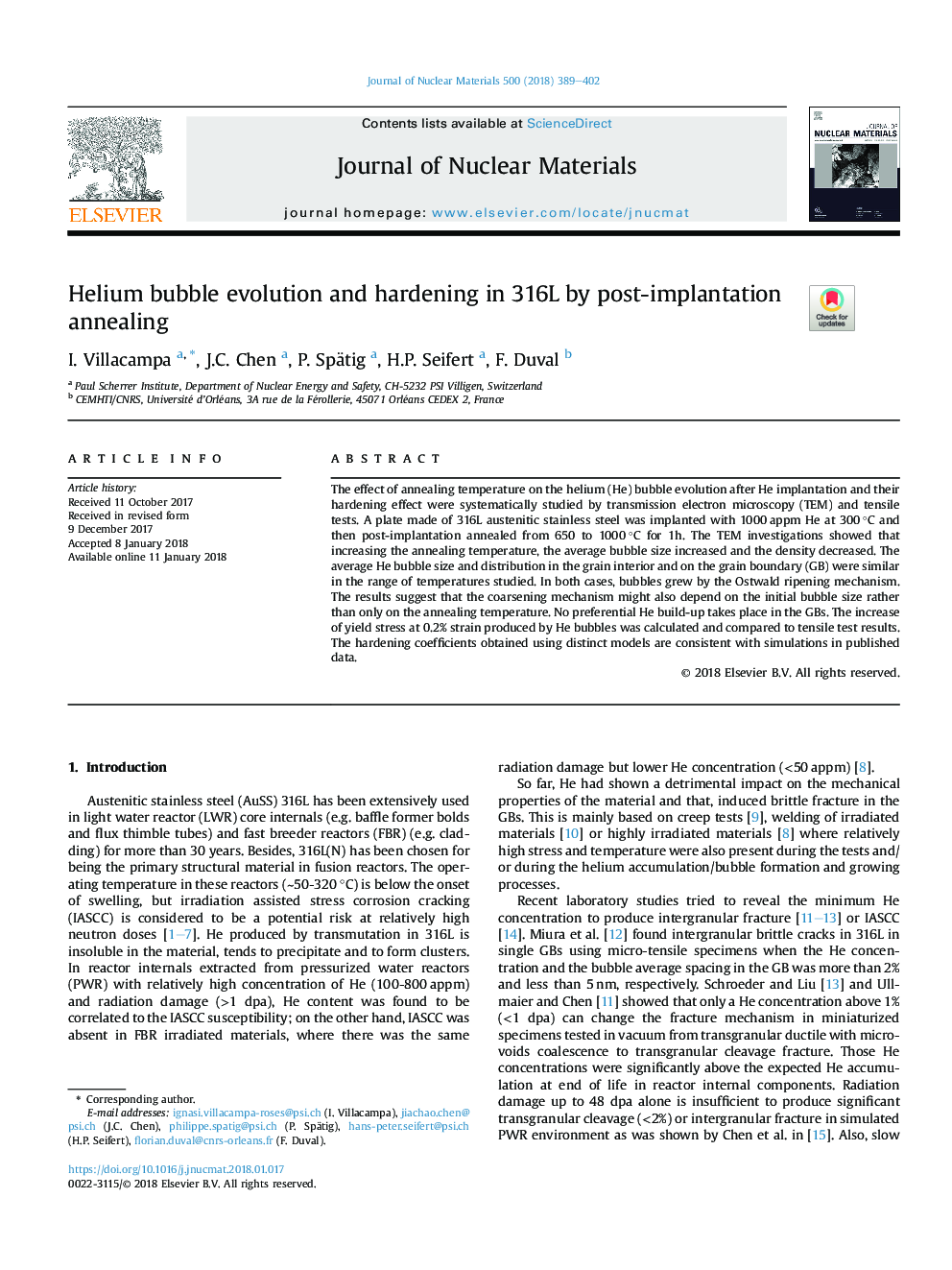| Article ID | Journal | Published Year | Pages | File Type |
|---|---|---|---|---|
| 7963502 | Journal of Nuclear Materials | 2018 | 14 Pages |
Abstract
The effect of annealing temperature on the helium (He) bubble evolution after He implantation and their hardening effect were systematically studied by transmission electron microscopy (TEM) and tensile tests. A plate made of 316L austenitic stainless steel was implanted with 1000â¯appm He at 300â¯Â°C and then post-implantation annealed from 650 to 1000â¯Â°C for 1h. The TEM investigations showed that increasing the annealing temperature, the average bubble size increased and the density decreased. The average He bubble size and distribution in the grain interior and on the grain boundary (GB) were similar in the range of temperatures studied. In both cases, bubbles grew by the Ostwald ripening mechanism. The results suggest that the coarsening mechanism might also depend on the initial bubble size rather than only on the annealing temperature. No preferential He build-up takes place in the GBs. The increase of yield stress at 0.2% strain produced by He bubbles was calculated and compared to tensile test results. The hardening coefficients obtained using distinct models are consistent with simulations in published data.
Related Topics
Physical Sciences and Engineering
Energy
Nuclear Energy and Engineering
Authors
I. Villacampa, J.C. Chen, P. Spätig, H.P. Seifert, F. Duval,
